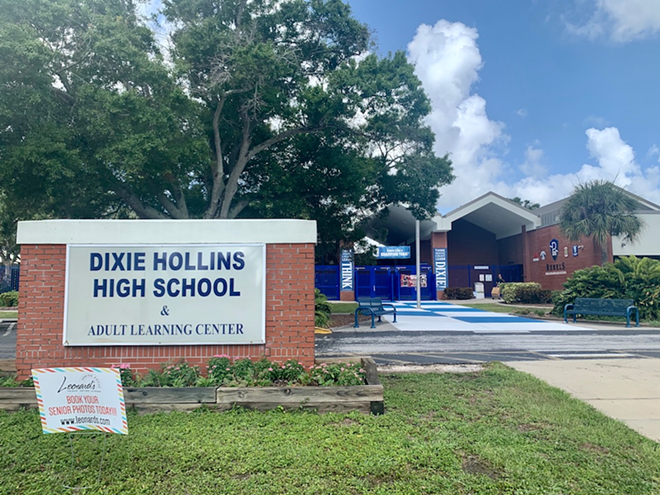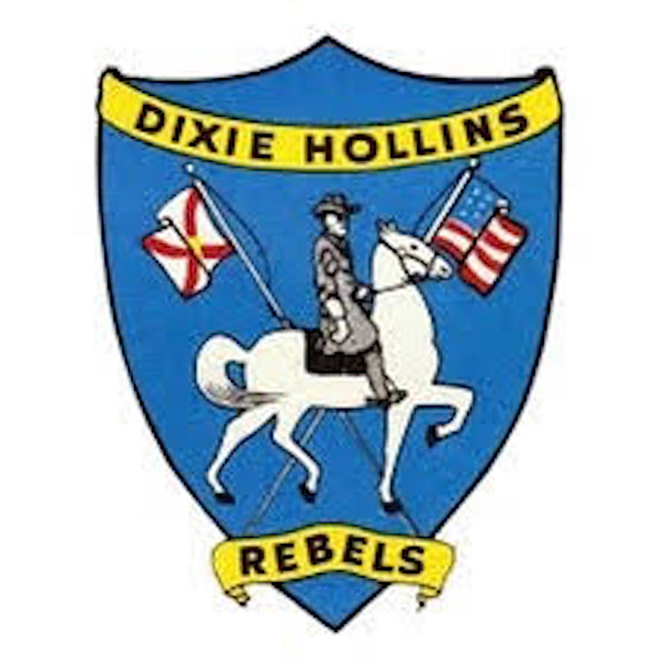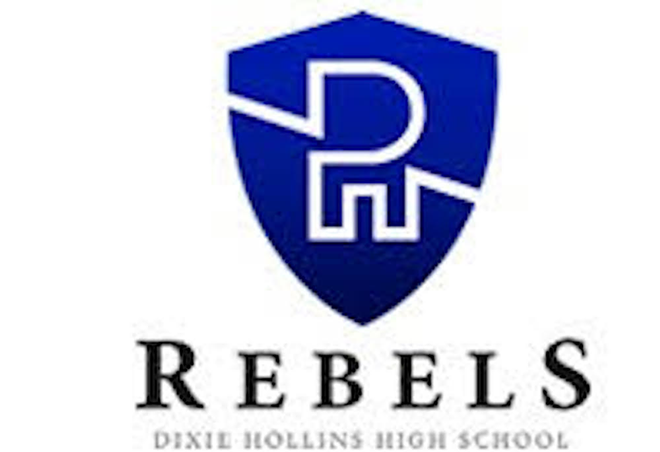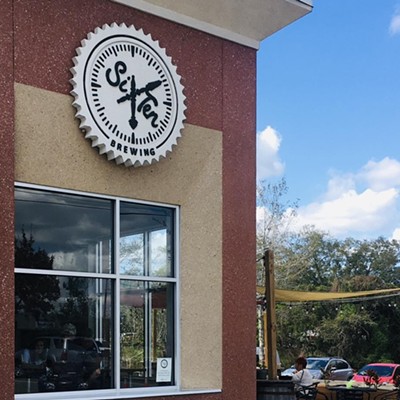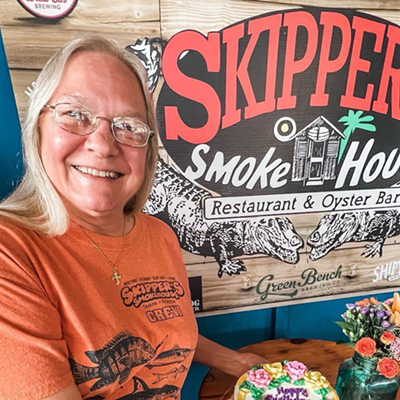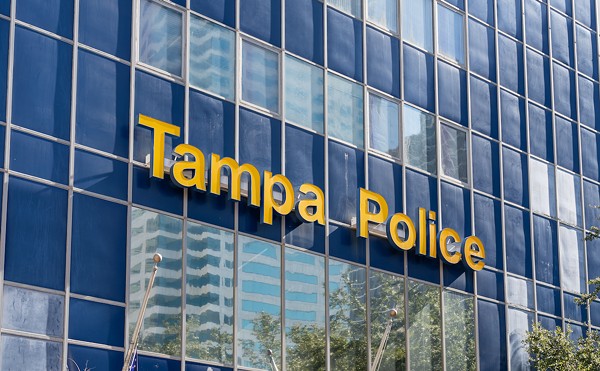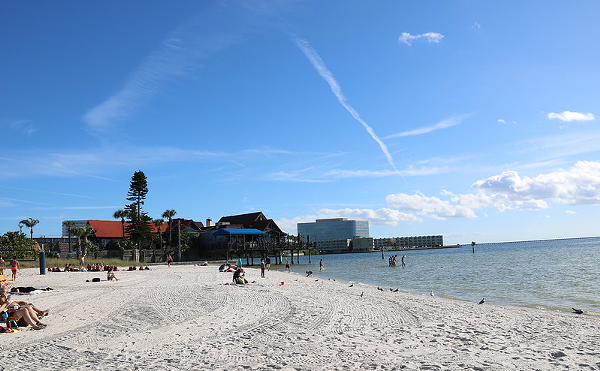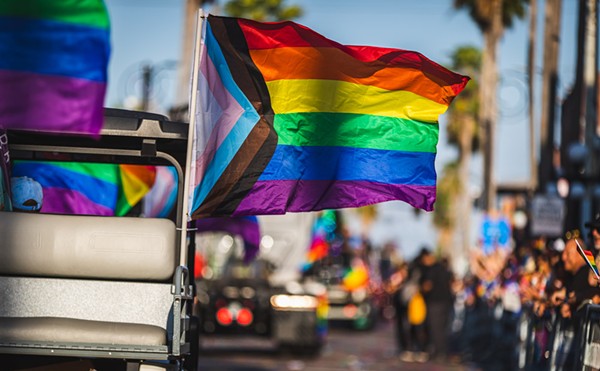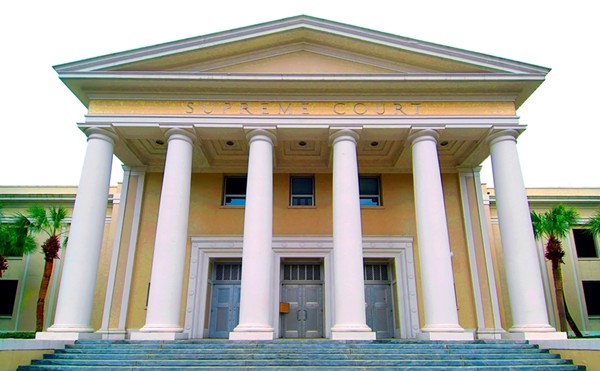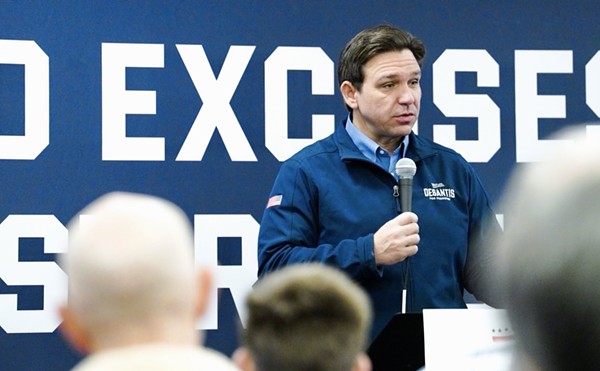In March, Lakeland finally removed its 108-year-old Confederate monument in Munn Park.
And while news is swirling about the destruction of monuments dedicated to leaders of the Confederacy, it's hard to not drive around my own hometown and see what my white privilege has allowed me to overlook.
As a graduate of the Pinellas County school system, I immediately thought of Dixie Hollins High School. From what little I knew of the school before hopping on Google, I remembered that the mascot is the “Rebel”—an old version of the school logo looks to be a plantation owner sporting a long white mustache. Seems problematic, right? Let’s dig deeper.
In 1959, the school laid its roots at 4940 62nd St. N. in St. Petersburg; it was named after Pinellas County’s first superintendent of schools, Dixie M. Hollins. To give a little context, 1959 was just five years after the the ruling in Brown V. Board of Education rendered racial segregation in schools, four years after the murder of 14-year-old Emmett Till, two years after the “Little Rock Nine” enrolled at a formerly all-white high school, and one year before six-year-old Ruby Bridges became the first student to integrate William Frantz Elementary School in New Orleans (escorted by armed federal marshals). In other words, the nation was in the heart of the Civil Rights Movement.
In “Desegregation of Public Schools in Pinellas County, Florida”—a scholarly 1991 paper published by USF St. Petersburg—author James Anthony Schnur recalls racially-charged events throughout the county including one in 1959 when 11 Black students were accompanied by an NAACP attorney for admission to Dixie Hollins High School.
John Romano’s 2015 Tampa Bay Times article—”In 1971, the Confederate flag was at the heart of St. Petersburg school's painful conflict”—provides more insight into the racial tensions in Pinellas County as a whole. In it, Romano writes about a Pinellas Park sign that said "No N— after dark',” and how Dixie Hollins’ fight song “longed for ‘the days of cotton.’''
At the beginning of the 1971 school year, when desegregation officially arrived in Pinellas County, then Dixie high principal Kenneth Watson announced that the Confederate battle flag would no longer be allowed on campus. The flag was used as an intimidation tactic for Black students integrating into the school. Romano wrote that the following morning, “dozens of parents were already protesting across the street with flags in hand” (sound familiar?).
Fights broke out by the buses by the next week, and Romano wrote, “Every day there was a new tally of suspensions and arrests. A sheriff's deputy was stabbed, and several students were taken to hospitals after fights.” In an interview with the Times, Realtor Lou Brown, who was among the first African-Americans bused to Dixie in 1971, said he understood that although the flag can mean heritage to some people, but for him, it represented hate.
"People used that flag to try to intimidate us. They used it as a symbol of hate,” Brown explained. “People driving up and down that street with their “Easy Rider” rifle racks in their trucks and the flag waving out the window, yelling 'Go home n—' as soon as we got off the bus.''
But as the New York Times pointed out in October 1971, Black students were already protesting over the Rebel mascot and “Dixie” fight song. At the time, the State Legislature had prohibited any action by school authorities to prevent high school bands from playing “Dixie.”
The high school’s six-decade history is steeped with racial injustice, and changes to the mascot, so it’s not surprising to find that “Dixie Hollins Students” started a change.org petition that asks Principal Robert Florio to not only the change of the Rebel mascot, but also for the school’s name to change to “Hollins High School.”
The new petition, which has less than 100 signatures as of Friday morning, reads:
“We, as students that love this school and want to be able to announce that we attend it with pride, believe that there is a way to honor the man the school is named after while still cutting off the deep-rooted hatred attached to the symbols the school currently uses. A name along the lines of “Hollins High School” preserves the history but isn’t a reminder of the Confederate South. Also, a different mascot with less controversial tones would help push the school in the right direction. All of this is in an attempt to portray our school in the best light possible and to acknowledge the current activist movements.”
That means 14-18 year olds are more cognizant and willing to act than grown folks who’ve seen the history of injustice in the community unfold firsthand. That is pathetic.
St. Pete, likes to consider itself as a city of diversity and inclusion, so why is it allowing even a speck of resemblance of the Confederacy to exist in the community?
In a July 13 email to Creative Loafing Tampa Bay, St. Petersburg's Policy Chief Kevin King told CL that despite its address, Dixie Hollins High School is not in St. Petersburg.
"It's in Kenneth City. If it were in St. Pete, we'd still have no jurisdiction over its name unfortunately (though I think the name is named after someone named Dixie, not Dixie as in south.) We can all agree 'Rebels' probably needs to go," King—who was fired from the Pinellas County School District in 2011 after "St. Petersburg police accused him of trying to get two female students, ages 14 and 15, to skip school and drink beer with him"—told CL.
"Given the county's jurisdiction here and the school not being in St. Pete, and the mayor not being familiar with any internal conversations on this, the only thing he'll add is that he has always found the Rebels nickname to be offensive and inappropriate and he would encourage those in charge of such a decision to retire it," King added.
Even Jen Cox, great-granddaughter of late superintendent Hollins is on board with the students' call for a name change.
"I recently started researching how to go about approaching the county and the school about changing the school’s name to Hollins as well as the mascot and any other vestiges that have a racist and painful correlation," Cox wrote in an email to CL's Jenna Rimensnyder, who wrote this article. Cox, who lives in Atlanta but grew up in St. Pete, said she was encouraged by the students' action.
"My great-grandfather advocated for greater access to education for Black students," Cox wrote. "It is indeed ironic that he bears a first name that belies those values. Regardless, what’s most important, is to remove something that glorifies hatred and racism."
Plus, changing a school’s mascot isn’t unprecedented (in pro sports, the NFL’s Washington Redskins are considering a change as are MLB’s Cleveland Indians.) A 2013 story by CNS Maryland pointed out that 28 high schools in 18 states have dropped “Redskin” as their mascot in the last 25 years.
And changing a school’s name entirely isn’t unheard of either. In Tampa, Robert E. Lee Elementary School is now Tampa Heights Elementary, and in the last three years, two high schools named after the Confederate general changed names, too. One was a 62-year-old San Antonio, Texas school that changed its name to “LEE High School,” an acronym for Legacy of Educational Excellence in 2017.
School board member, Edd White, told American School & University Magazine that prior to the name change, “the district had attempted to make Lee a more “palatable” figure by stripping away the corresponding Civil War symbolism from its athletic teams and spirit groups (ie: the Confederate battle flag on uniforms, and, more recently, the band’s renditions of “Dixie” during football games). That sounds familiar.
In June of this year, Fairfax High School in Virginia changed its mascot from the Rebels to the Lions. An email bulletin distributed by Fairfax County Public Schools last month explained the mascot change like this: “At Fairfax, we pride ourselves on inclusivity, family, belongingness, respect, and integrity, and given the history of Rebel, it is time for a change[.]”
That same month, three other U.S. high schools followed suit: Washington’s Juanita High School, Quartz Hill High School in California, and Richland High School in Texas. Jack McCarty, Board president and 1980 graduate of Richland High School, told CBSN Dallas-Ft. Worth, “Our school’s history should be based on people and not divisive symbols.”
Closer to home, the University of Florida denounced and is no longer performing its “Gator Bait” cheer. On June 18, nearly three weeks after the murder of George Floyd, UF President Kent Fuchs released a statement outlining strategic goals to help combat racism.
"While I know of no evidence of racism associated with our 'Gator Bait' cheer at UF sporting events, there is horrific historic racist imagery associated with the phrase,” he said.
So what is Dixie Hollins waiting for?
By continuing to allow Dixie Hollins to represent its student body as the “Rebels,” it is celebrating the losing side of the war which was fought over the autonomy of Black bodies. The Civil War ended in 1865, and Dixie Hollins was founded nearly a century after with the mascot of a Rebel, with a logo of a soldier on a horse wearing a gray uniform holding both the state and United States flag all in the midst of a movement arguing that Black people should be treated as human beings. It's insulting and ridiculous. If the original intentions weren’t to make the Rebel represent the Confederacy, which fought to preserve its practice of enslaving Black bodies, then what were they? This was a specific targeted rebuttal against the Civil Rights Movement. White supremacy has a habit of masquerading itself as patriotism.
After CL reached out to Pinellas County Schools for a comment on mascot change of Dixie Hollins’ Rebels, Public Information Officer Isabel Mascareñas spoke with both Superintendent Dr. Michael A. Grego and Dixie Hollins’ Principal Florio and sent this statement:
“When the school opened in 1959, Hollins’ first name ‘Dixie’ was used as a springboard to connect the school to Confederate symbols and theme because of the southern name… Pinellas County Schools understands the name’s historical implications. We respect the feelings of those who are unhappy with the mascot. Any changes to the school’s mascot cannot be made by the principal unilaterally but would be a school-based decision generated by the student-government, together students would decide what’s in the best interest of their school.”
Mascareñas went on to explain the school’s past initiatives including no longer utilizing the “Dixie” fight song, separating the school name from the Confederate soldier Colonel Dixie character, along with its most recent change several years ago (year not specified) when “the school’s current principal, Robert Florio, with input from the school community eliminated all symbolism tied to the confederacy.”
As part of that change, the schools’ art students redesigned the school logo and the mascot the Rebels. The new logo is a creative merger of the school’s initials and the letter “R” for the mascot.
“By making these changes and understanding the school’s namesake, the meaning behind the school’s mascot is different for many Dixie Hollins HS students today compared to students decades ago,” the statement added.
Does the school board think we’re that stupid? That these changes are supposed to cover up the fact that the image of the Rebel represents racism and hatred? And that by simply changing the symbol and leaving the mascot, we can sweep it under the rug? Just because Confederate flags are no longer waving on school grounds and the band isn’t whistling "Dixie," doesn’t mean that the term “Rebel” is stripped of its context.
On a phone call with CL on June 25, Mascareñas said there isn’t a current initiative being made to change the mascot, and that there hasn’t been any outreach from the community with the request. That was until the petition by current Dixie Hollins students was created the first week of July.
For too long we as a society have normalized institutions of learning and monuments which were built as an ode to the Confederacy. In the war of good vs. evil, we’re somehow allowing evil to have a place, to be celebrated, to be printed on T-shirts, jerseys and proudly shouted from the stands.
The presence of the Confederacy is an open sore that oozes racial injustice and with hatred from the past and present. If in fact there needs to be community outcry for Confederate symbolism to be stripped from our schools, we must sign a recent petition by Dixie Hollins’ students on change.org.
If the weight of the mascot change is truly on the shoulders’ of the student body rather than the qualified individuals at the head of the education system, then the students already made a move by signing and sharing of the petition. The final Confederate feather in Dixie Hollins’ cap needs to be plucked. Your move, Pinellas County Schools.
UPDATED: 07/13/20 2:36 p.m. Updated with comments from City of St. Petersburg official Kevin King, to correct a misspelling of Isabel Mascareñas' name and include comments from Hollins' great-granddaughter Jen Cox.
Support local journalism in these crazy days. Our small but mighty team is working tirelessly to bring you up to the minute news on how Coronavirus is affecting Tampa and surrounding areas. Please consider making a one time or monthly donation to help support our staff. Every little bit helps.
Follow @cl_tampabay on Twitter to get the most up-to-date news + views. Subscribe to our newsletter, too.

